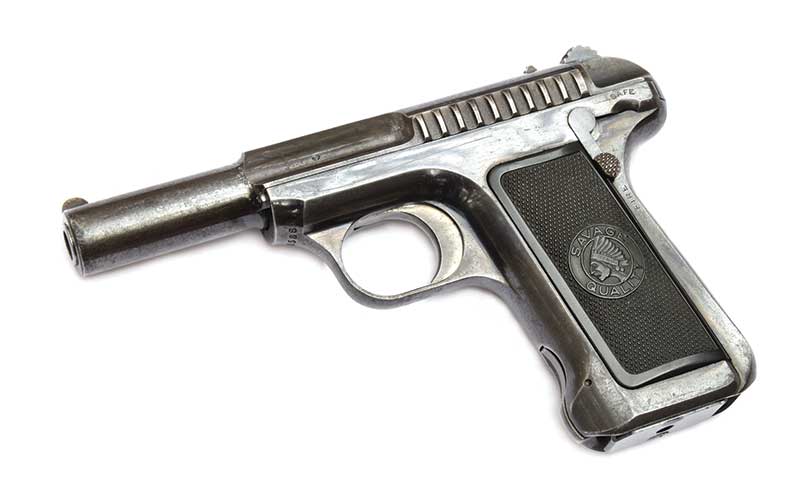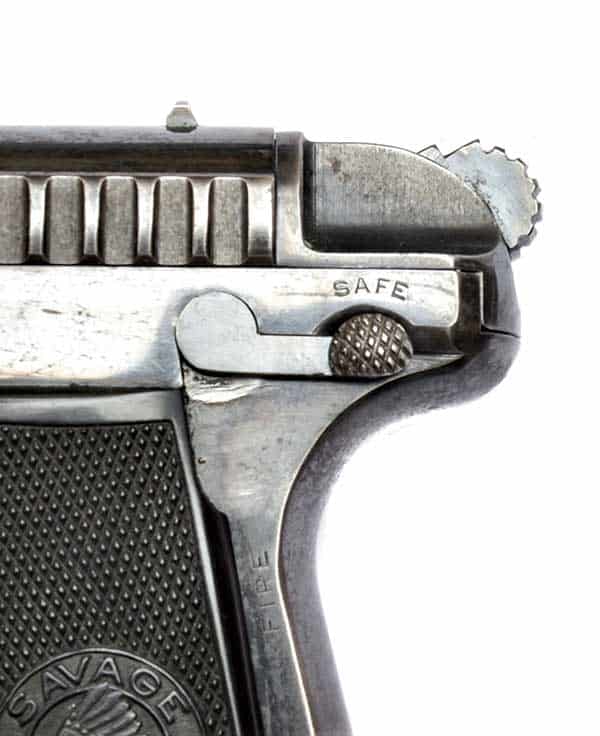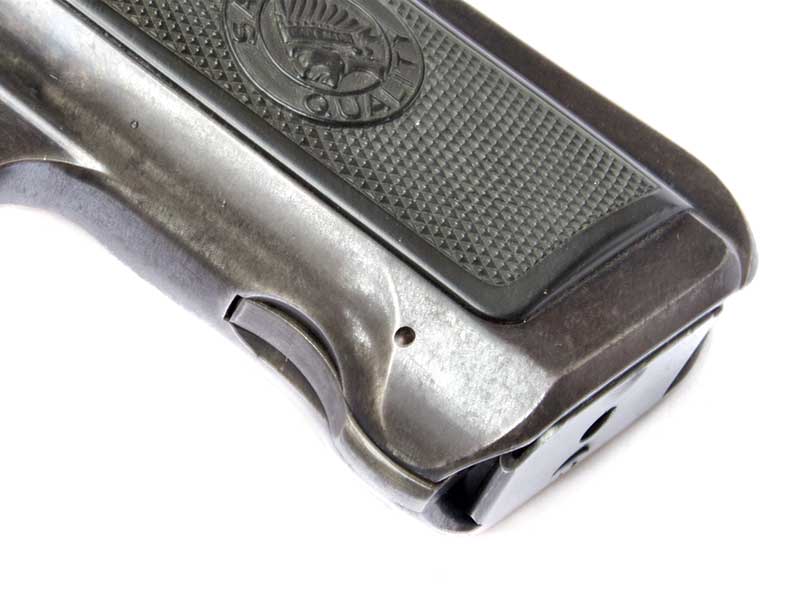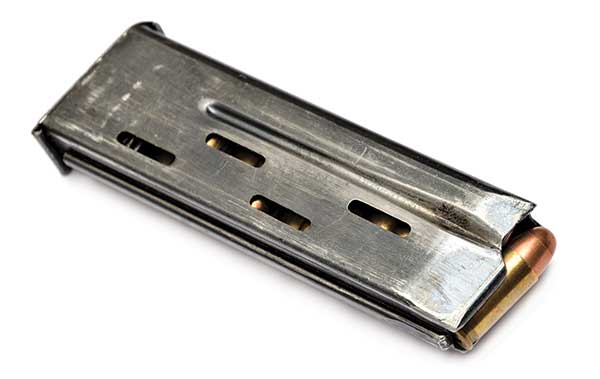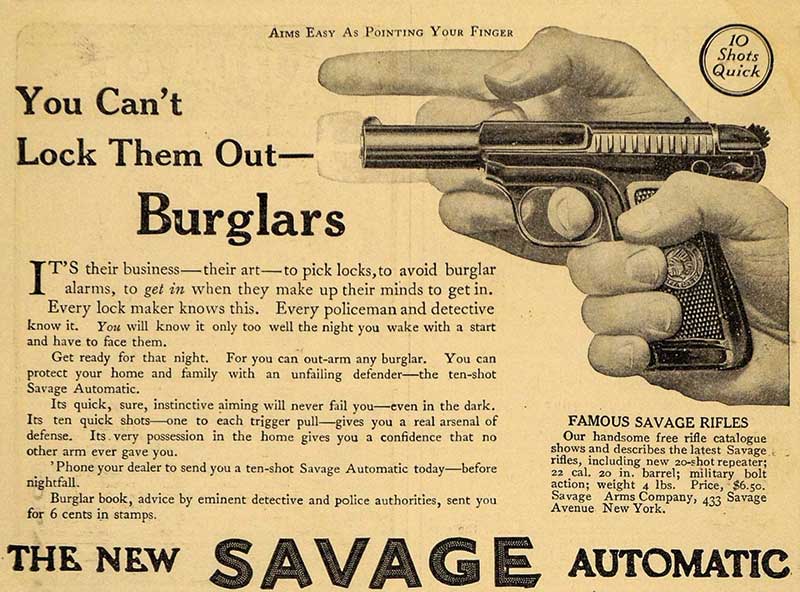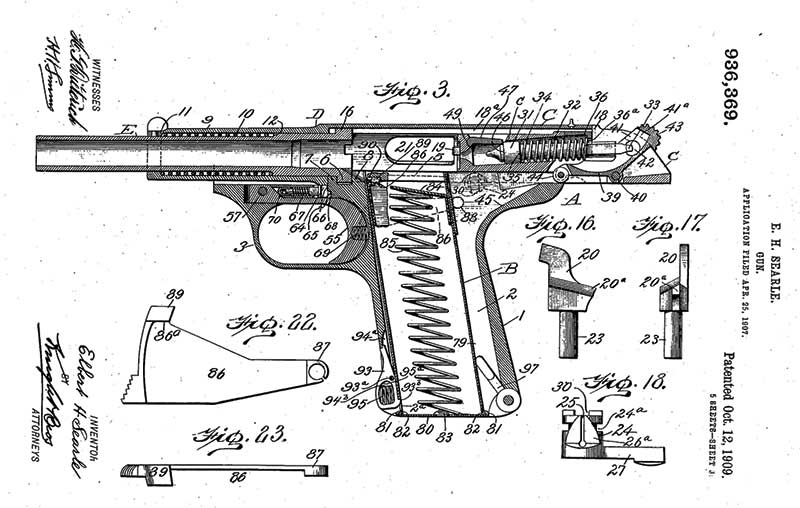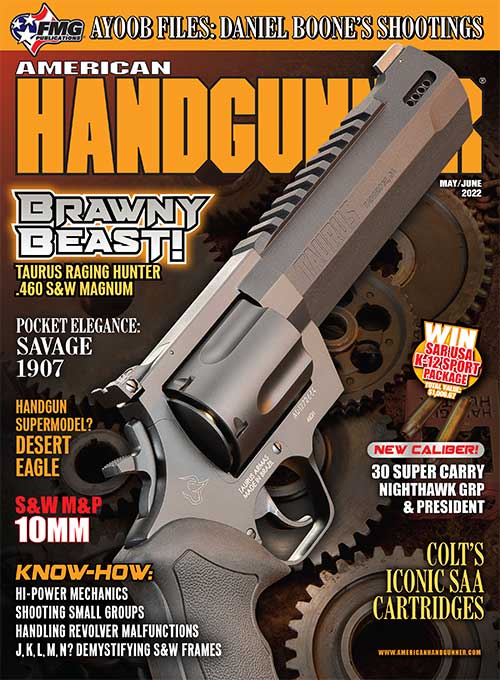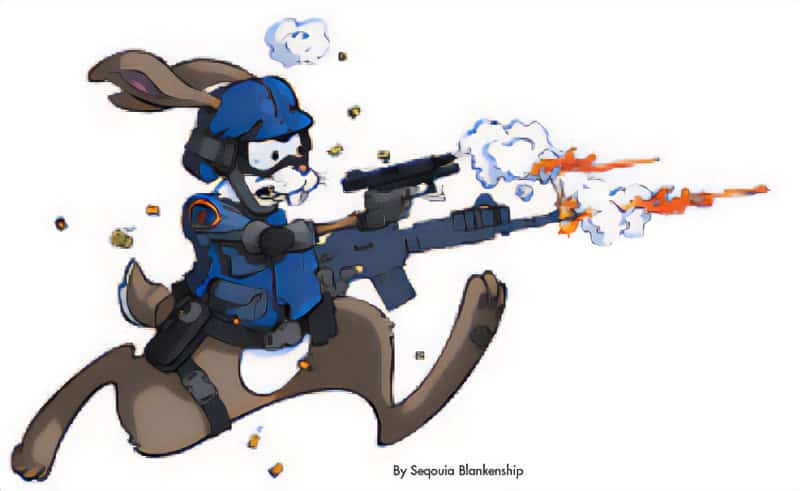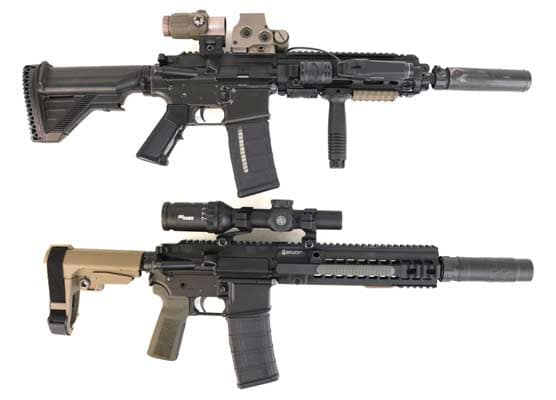The Savage Model 1907 Pistol: Eating Colt’s Lunch
Today, we associate the Savage Arms Company with exceptionally accurate, innovatively engineered, well-made and value-priced rifles. Quality sporting rifles were always their main product line and the company made its reputation with their brilliant rotary magazine hammerless lever-action Model 1899 rifle.
In 1908, while still essentially a newcomer to firearms manufacturing, Savage boldly introduced their Model 1907 pistol. It was the first of a small family of pocket handguns (including the Model 1915 and Model 1917) intended to compete directly with Colt’s wildly popular Model .32 ACP 1903, and later .380 ACP Model 1908 pocket autoloaders.
In the first years of the 20th century, autoloaders were gaining popularity worldwide. Fabrique National in Belgium struck a deal with American arms designer John Browning to manufacture and market his Model 1899 pistol and its new .32 cartridge. It was an immediate hit commercially and with the Belgian military adopting it as the Model 1900. FN’s success with the little autoloader did not go unnoticed at Colt. They bought Browning’s next autoloader design and wasted no time getting the Colt Model 1903 into production. It proved a wise decision. Colt’s first foray into the pocket autoloader market was an instant hit with the public. Savage took note and hoped to cut out a share of this market for themselves eventually.
Pocket Improvement
To compete with an industry giant like Colt was no small thing, especially when they were first to market with an excellent product. It took a few years, but Savage discovered the basis for a worthy challenger to Colt’s supremacy in the 1905 patents of Elbert H. Searle, a former U.S. Army ordnance officer at Springfield Armory. In a time of great engineering diversity in autoloading pistol design that sometimes resulted in bizarre-looking, ungainly and impractical firearms, Searle’s patent drawings suggest an advanced grasp of ergonomics and an aesthetic sensibility combined with sound practical engineering. From Savage’s point of view, I suspect three unique features of Searle’s designs stood out as the means to achieve a competitive edge over Colt’s Model 1903. They were a turning barrel, delayed blowback operating system, a double-column magazine, and a fingertip-operated magazine release button. They incorporated all three in their new Model 1907 Savage Automatic.
The delayed blowback feature allowed the Savage pistol’s slide, and thus the overall gun, to be smaller and lighter than the simple blowback pocket Colt. The Savage weighed only 19 oz. to the Colt’s 24 oz. and it was a quarter-inch smaller in height and length, too, despite having the same barrel length.
Magazine Innovations
The double-column magazine in the Savage production model had a 10-shot capacity, two shots more than Colt’s single-stack magazine. While double-column detachable magazines for autoloaders had already appeared in Europe (the Bergmann-Bayard pistol comes to mind), they were inserted in a magazine well forward of the trigger guard. The Savage, like virtually all modern handguns, located the magazine inside the grip frame.
To expedite magazine changes, Searle positioned the magazine release button on the front grip strap to be operated with the index or ring finger of the shooting hand. Savage must have perceived it as a genuine tactical advantage since it allowed the shooter to drop the empty magazine while readying a replacement magazine for insertion with the off hand. It was the fastest system around for pocket autoloaders for decades. The Model 1903 Colt, and virtually all other pocket autoloaders, had their magazine catch on the heel of the grip frame, which required the shooter to first remove the empty magazine with his off hand before inserting another.
Handling & Shootability
The Model 1907 Savage Automatic had more subtle advantages over the Colt’s Model 1903. Both guns point well, but the Savage’s sleek, minimalist, slide and low bore axis gave it better pointing characteristics and helped mitigate muzzle flip between shots for faster and more accurately placed follow-up shots. In addition, the Savage’s delayed blowback operation allowed it to harness more power from the .32 ACP cartridge than a simple blowback. Perhaps this also increased the recoil impulse and I wouldn’t disagree. However, I think the Savage’s low bore axis compensated for it.
Initially, the Model 1907 Savage Automatic cost the same as the Model 1903 Colt. Overall, I think the Savage Automatic was always the better gun in all respects but the manual safety. Both the Savage and Colt safety can hold the slide open for cleaning, but the Colt safety is easier to manipulate with the shooting hand thumb. Some have criticized the Savage Automatic for having a heavy trigger pull, but what constitutes a heavy trigger pull is subject to debate. My 1910 vintage Model 1907 Savage Automatic has close to an 8-lb. trigger pull, but it is crisp. The only time I notice it is during deliberately aimed shooting. In fast tactical shooting, it doesn’t seem to be a detriment. While we consider 8 lbs. heavy by today’s standards, it was not out of line for pocket pistols of this era. Keep in mind, nobody wants a pocket pistol going off while it’s in their pocket.
Not Hammer Time
Though appearing to have a hammer, the Savage Automatics are not hammer-fired. Where the “Hammerless” Model 1903 Colt is a hammer-fired pistol with the hammer concealed under the slide, the Model 1907 Savage Automatic is a striker-fired pistol with the end of the striker extending out the back of the slide like a hammer. I see three advantages of attaching the end of the striker to an exposed cocking lever. First, you can cock the striker by hand to make it easier to rack the slide back to chamber a round. This was important for many women shooters, a demographic that Savage targeted. Second, the externally mounted cocking lever made it easy to see or feel if the striker was cocked. Finally, in the event of a misfire, the striker can be re-cocked without racking the slide. This being said, it takes some substantial thumb strength to cock that striker lever! Even a man can’t do it while maintaining a shooting grip.
Savage introduced its first pistol to the public in 1908 and kept them in production for nearly 20 years. Reliable, well made, well finished and well-advertised, the guns seem to have sold as fast as Savage could make them. Savage ate Colt’s lunch in the pocket .32 automatic market, outselling them domestically from 1909 through 1914 and then again after the World War in 1919. During the war, Savage fulfilled large orders for its pistols from the French military (and a small order for the Portuguese military). Still, most of their wartime manufacturing work was focused on producing Lewis light machine guns for the Allied Nations. The last model of the Savage Automatic pistol, the Model 1917, was offered in their catalog until at least 1928. In total, Savage made over 272,500 pistols over 20 years. The .32 ACP models outsold the .380 ACP guns by nine times.
I expect the Great Depression had a lot to do with discontinuing the Savage Automatic line. To Colt’s relief, Savage never made another pistol.

